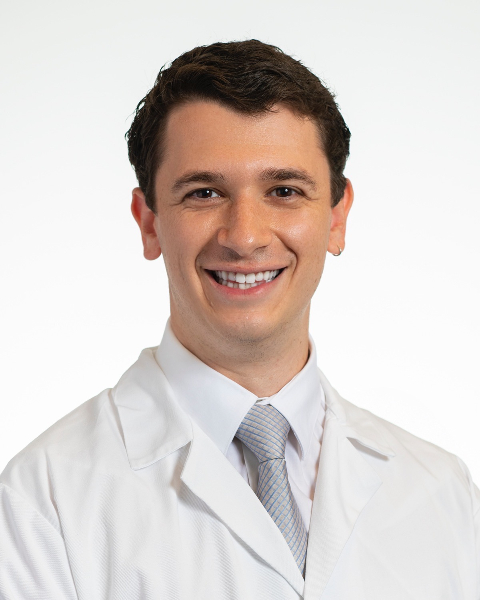PQA 04 - PQA 04 Palliative Care and Central Nervous System Poster Q&A
2490 - Predictors of Local Failure in the Durable Palliation of Recurrent Breast Cancer Following Concurrent Hyperthermia and High Dose Radiation
Monday, September 30, 2024
10:45 AM - 12:00 PM ET
Location: Hall C
Screen: 16

Mark Solter, BA
Cleveland Clinic Lerner College of Medicine
Cleveland, OH
Presenter(s)
C. Billena1, M. L. Solter2, P. Qi1, C. S. Shah1, and J. S. Yu1; 1Department of Radiation Oncology, Cleveland Clinic Foundation, Cleveland, OH, 2Cleveland Clinic Lerner College of Medicine, Cleveland, OH
Purpose/Objective(s): Locally recurrent breast cancer can be highly morbid, leading to significant pain, disability and disfigurement for patients. Hyperthermia can be used in the setting of locoregional recurrences to enhance control. We examined local control rates and predictors of control of locally recurrent breast cancer following high dose radiation (RT) with concurrent hyperthermia (HT). Materials/
Methods: 73 patients with 81 lesions of recurrent breast cancer from 2011 to 2023 were identified from an IRB-approved institutional registry. Dosimetric, clinical, and toxicity data were collected. Fisher exact test was used for univariate analysis. Local control rates were summarized using cumulative incidence function, and predictors assessed by Gray’s test and competing risk regression.
Results: Median follow-up was 19.9 months. Median age was 66 years old, and 68 patients (96%) were female. Among 81 lesions, 69% were hormone receptor positive (ER and/or PR), 14% had HER2 amplification, and 21% had triple negative breast cancer. 82% received prior radiation therapy. RT was delivered to a median dose of 32 Gy [IQR 30 - 40] and a median fractionation of 10 [IQR 8 - 13], most commonly delivered biweekly. HT was given to 43 degrees ? for 60 minutes per session typically twice a week before RT. Median tumor volume was 1087 cc [IQR 316.59 - 2168.09]. By lesion, there were 41 (51%) complete responses (CR), 21 (26%) partial responses (PR), 11 (13%) stable disease, and 8 (10%) progressive disease. Cumulative incidence of local failure at 12 and 24 months were 16% and 19%. Local failure risk was not associated with ER status (p=0.96), PR status (p=0.85) , HER2-amplification (p=0.84) , receipt of prior RT (p=0.7), tumor volume (p=0.77), RT dose (p=0.74), dose per fraction (p=0.56), HT prescription (p=0.12), or overall treatment time (p=0.39). Acute Grade 2 or less toxicities included 78% of patients experiencing radiation dermatitis, 40% fatigue, 40% pain, 26% hyperpigmentation, 10% of lymphedema, 9% pruritus, 7% dysphagia, and 5% nausea. There were no acute Grade 3+ toxicities except for Grade 3 radiation dermatitis in 3 patients. Receipt of prior radiation was not associated with increased frequency of the above acute toxicities (p>0.05). Long-term toxicities included 9% of patients with ulceration, 7% hyperpigmentation, 7% fibrosis, and 4% telangiectasias.
Conclusion: Combining HT and RT yields durable locoregional control at 2 years while maintaining a favorable acute and long term side effect profile, even in the context of re-irradiation. RT doses of 30-40 Gy provided excellent response rates across a wide range of tumor volumes and is safe to deliver in the palliative setting.
Purpose/Objective(s): Locally recurrent breast cancer can be highly morbid, leading to significant pain, disability and disfigurement for patients. Hyperthermia can be used in the setting of locoregional recurrences to enhance control. We examined local control rates and predictors of control of locally recurrent breast cancer following high dose radiation (RT) with concurrent hyperthermia (HT). Materials/
Methods: 73 patients with 81 lesions of recurrent breast cancer from 2011 to 2023 were identified from an IRB-approved institutional registry. Dosimetric, clinical, and toxicity data were collected. Fisher exact test was used for univariate analysis. Local control rates were summarized using cumulative incidence function, and predictors assessed by Gray’s test and competing risk regression.
Results: Median follow-up was 19.9 months. Median age was 66 years old, and 68 patients (96%) were female. Among 81 lesions, 69% were hormone receptor positive (ER and/or PR), 14% had HER2 amplification, and 21% had triple negative breast cancer. 82% received prior radiation therapy. RT was delivered to a median dose of 32 Gy [IQR 30 - 40] and a median fractionation of 10 [IQR 8 - 13], most commonly delivered biweekly. HT was given to 43 degrees ? for 60 minutes per session typically twice a week before RT. Median tumor volume was 1087 cc [IQR 316.59 - 2168.09]. By lesion, there were 41 (51%) complete responses (CR), 21 (26%) partial responses (PR), 11 (13%) stable disease, and 8 (10%) progressive disease. Cumulative incidence of local failure at 12 and 24 months were 16% and 19%. Local failure risk was not associated with ER status (p=0.96), PR status (p=0.85) , HER2-amplification (p=0.84) , receipt of prior RT (p=0.7), tumor volume (p=0.77), RT dose (p=0.74), dose per fraction (p=0.56), HT prescription (p=0.12), or overall treatment time (p=0.39). Acute Grade 2 or less toxicities included 78% of patients experiencing radiation dermatitis, 40% fatigue, 40% pain, 26% hyperpigmentation, 10% of lymphedema, 9% pruritus, 7% dysphagia, and 5% nausea. There were no acute Grade 3+ toxicities except for Grade 3 radiation dermatitis in 3 patients. Receipt of prior radiation was not associated with increased frequency of the above acute toxicities (p>0.05). Long-term toxicities included 9% of patients with ulceration, 7% hyperpigmentation, 7% fibrosis, and 4% telangiectasias.
Conclusion: Combining HT and RT yields durable locoregional control at 2 years while maintaining a favorable acute and long term side effect profile, even in the context of re-irradiation. RT doses of 30-40 Gy provided excellent response rates across a wide range of tumor volumes and is safe to deliver in the palliative setting.
